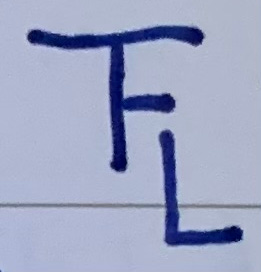What are Blue Zones: Regions of the world where people live significantly longer and healthier lives than average. These regions often have people living to 100 years old at rates 10 times higher than in the United States. Now we may ask why is that? Lets dive in.
1. Why People in “Blue Zones” Live Longer Than the Rest of the World
The Five Official Blue Zones:
Icaria, Greece: Mediterranean diet, olive oil, wine, homegrown food.
Sardinia, (Italy): Physically active shepherds, red wine, family-focused.
Okinawa, Japan: Soy-based foods, tai chi, strong sense of purpose.
Nicoya Peninsula, Costa Rica: Beans, corn tortillas, hard physical work, “plan de vida.”
Loma Linda, California (USA): Seventh-day Adventists, vegetarian diet, strong faith.
Common Lifestyle Features: Healthy natural food, physical activity that is built into everyday life (walking, gardening, chores), sleep optimization, social connections, and strong sense of purpose and faith.
2. Can the Blue Zone Diet Help You Live Longer?
By: American Institute for Cancer Research (June 25th, 2024)
The key here is that it is a long term and sustainable eating pattern, not a short-term restrictive diet.
Common features across regions (Italy, Japan, Costa Rica, etc.):
Emphasis on fruits, vegetables, and plant-based foods. Beans, lentils, soy, and a little fish are main protein sources; red meat is rare. Nuts are eaten daily. Whole grains (like barley, oats, whole wheat) replace refined grains. Desserts are occasional treats, not daily indulgences. Water, wine, tea, and coffee are common beverages; sugary drinks are avoided.
Parallels to other healthy diets like the Mediterranean diet. Though not formally researched, Blue Zone eating aligns with evidence-based cancer prevention guidelines.
I personally would incorporate more animal-protein (fish, chicken, occasional high-quality red meat) as I feel it’s very important and can only add benefit to this diet.
Other Links for Blue Zone diet: Food Secrets of the World’s Longest-Lived People
3. Blue Zones: Centenarian Modes of Physical Activity: A Scoping Review
Regular Physical Activity (PA) in older adults delays institutionalization, maintains independence, reduces depression, and improves quality of life. Global PA levels declined (as of 2016), contributing to increased disability in the elderly.
PA enhances motor control, cognitive function, psychological well-being, and mitigates age-related conditions like sarcopenia and frailty.
Centenarians engage in continuous, moderate-intensity activities throughout the day. PA is mostly unstructured and embedded in daily routines (e.g., farming, walking, household chores). Agricultural work (e.g., farming, shepherding) walking and hiking, housekeeping and weaving, outdoor hobbies (e.g., swimming, dancing, gardening).
It should be no surprise that the areas of the world that live off the land, are outside with the sun and sea, and have movement of all intensities (low-high) in their daily lives, live significantly longer and healthier.
4. Why Social Bonds Are So Important for Our Health
The Blue Zone regions tend to be very family and environment oriented. They walk to their local market and say hello to everyone. They keep family close. Social interaction is as common and vital as oxygen to them. With social connectedness comes greater sense of purpose. Without it, comes loneliness and heartache.
Loneliness, distinct from social isolation, is the subjective feeling of disconnection—even when around others. It's increasingly common, worsened by the COVID-19 pandemic, and poses serious health risks, including poor sleep, depression, heart disease, weakened immunity, and even early death.
A helpful framework is GRACE:
Gratitude: Practice daily appreciation.
Reciprocity: Help others to feel needed.
Altruism: Volunteer to shift focus from self.
Choice: Recognize you can take action.
Enjoyment: Share positive experiences.
Closing Note: I want to stress that although there are particularly regions where these blue zones exist, it is not the location itself that brings vitality. It is the people, culture, and the lifestyles that have created these blue zones. If you took an unhealthy American and plopped them down in Sardinia, they may still be the same unhealthy American and same goes for the reverse. Ideally, we all move to these blue zones where this lifestyle is more readily available. But we don’t live in an ideal world. We must create our own blue zone environment with the tools we have. We do this by getting outside with nature, growing our own food, knowing our neighbors, and moving daily whether it be yard work or walking. We have the tools (maybe not the Mediterranean sea lol) to create a healthier and longer life but we have to be willing to change our lifestyle, and in this way, turn back to our roots.
Thank you for reading The FatLete Journal. If you have any thoughts, questions, or topics you’d like to be discussed please let me know in the comments!
-The FatLete Journal







Great information
Amazing